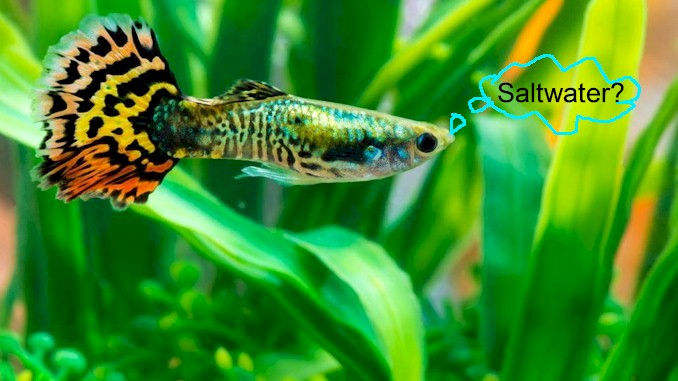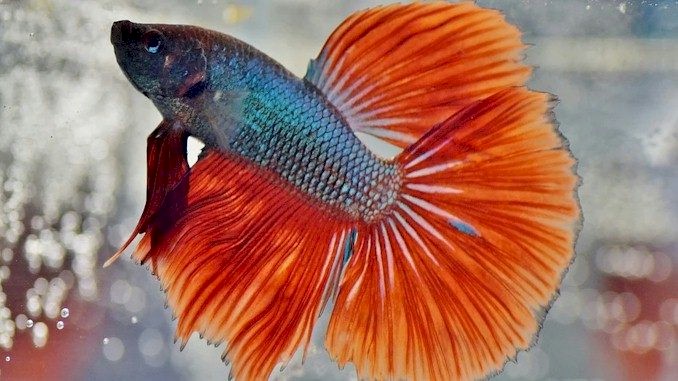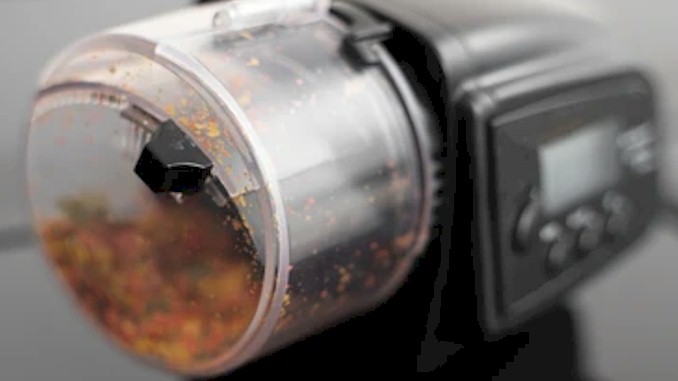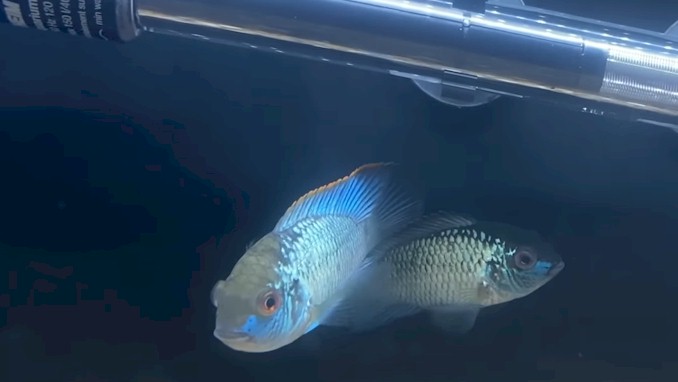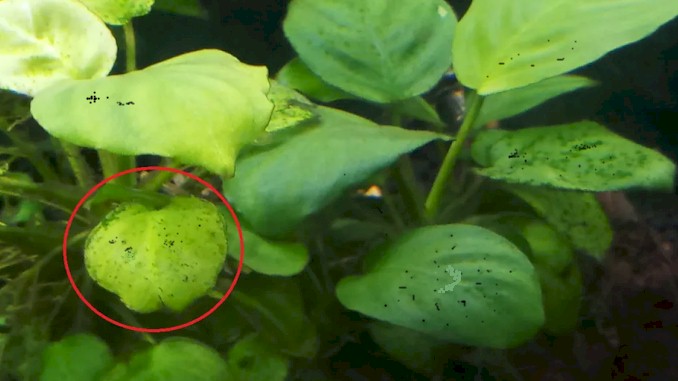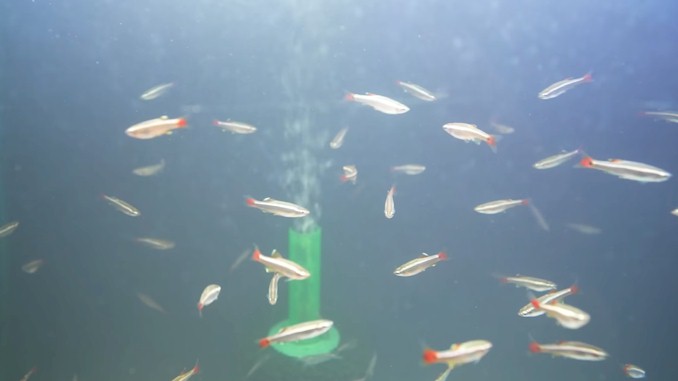Can Guppies Live In Saltwater – A Complete Guide
If you’re a guppy owner, you’ve probably heard about the benefits of keeping them in salty water. Guppies are known for their adaptability, which makes them able to tolerate changes in their environment. As someone who is intrigued by this topic, I wanted to learn more about the advantages of saltwater for guppies and how to make it happen. In this article, I’ll share my research journey and the knowledge I’ve gained along the way. Let’s dive in and explore the world of salty water guppies!
Guppies can tolerate brackish water with low salinity levels. However, guppies are not able to live in full saltwater environments as their bodies are not adapted to handle high salt concentrations. Therefore, guppies cannot live in saltwater, but they can thrive in brackish water with low levels of salinity.
So you know that guppies actually can live in brackish water other than salt water, like the sea. In case you are just like me, wondering what are benefits to having the guppies in salty water, how to make that happen, as well as the knowledge around this topic. Read on to find out:
What is brackish water, and can guppies live in it?
Brackish water is a type of water that contains a mixture of freshwater and saltwater, usually found in estuaries or where rivers meet the sea. The salinity levels in brackish water are generally lower than that of seawater, but higher than freshwater. Brackish water can vary in salinity levels from 0.5 to 35 parts per thousand (ppt). Guppies are freshwater fish, but they can tolerate low levels of salinity in brackish water.
The reason guppies can survive in brackish water is due to their ability to adapt to changes in their environment. Guppies have a unique ability to regulate their osmoregulation, which is the process of maintaining the proper balance of water and salt in their bodies. When placed in brackish water, guppies can adjust their osmoregulation to maintain the proper balance of salt and water in their bodies, allowing them to thrive in these environments.
However, you have to know that not all guppies can survive in brackish water. Wild guppies are more tolerant of brackish water than domesticated guppies, which have been bred for generations in freshwater environments. Therefore, it’s crucial to choose the right guppies for your brackish water tank. Select guppies that have been raised in brackish water or gradually acclimate them to the new environment by slowly increasing the salinity levels in the tank over time.
As you have learned, guppies can live in brackish water as long as the salinity levels are kept low and the guppies are gradually acclimated to the new environment. However, it’s important to choose the right guppies and monitor their behavior closely to ensure they are thriving in their new habitat. In the following sections, you will learn the benefits of keeping guppies in salty water, and I will dive deeper into the science behind guppies’ ability to tolerate low salinity levels and discuss the ideal salinity levels for keeping guppies in brackish water. I think you will be interested in it.
The benefits of keeping guppies in salty water
You might be wondering why someone would want to keep guppies in saltwater in the first place. Well, there are actually some advantages to doing so, such as:
- Improving their health: Saltwater can help prevent and treat some common diseases and parasites that affect guppies, such as ich, fin rot, fungus and velvet. Saltwater can also boost their immune system and reduce stress.
- Enhancing their colors: Saltwater can bring out the vibrant colors of guppies by stimulating their pigment cells4. This can make them more attractive and appealing to the eye.
- Increasing their lifespan: Saltwater can extend the lifespan of guppies by slowing down their metabolism and reducing their reproductive rate. This can help them live longer and healthier lives.
However, these benefits are not guaranteed and depend on several factors, such as:
- The quality of saltwater: The saltwater you use for your guppies should be clean, filtered and free of harmful chemicals. You should also monitor the salinity level regularly and keep it within the optimal range for guppies (39.0% to 58.5%).
- The acclimatization process: The acclimatization process is crucial for ensuring that your guppies can adapt to saltwater without suffering from shock or stress. You should follow the steps outlined in the previous section carefully and patiently.
- The tank conditions: The tank conditions for your saltwater guppies should be similar to those for freshwater guppies. You should provide adequate space, filtration, aeration, lighting, plants and decorations for your fish. You should also maintain a stable temperature (between 72°F and 82°F), pH (between 7.0 and 8.2) and ammonia level (zero).
As you can see, keeping guppies in saltwater has its pros and cons. You should weigh them carefully before deciding whether or not to try this experiment with your fish.
The science behind guppies’ tolerance to low salinity levels
Guppies have a remarkable ability to tolerate low salinity levels, making them an ideal choice for brackish water tanks. To understand how guppies can survive in low salinity environments, we need to take a closer look at the science behind their unique adaptation mechanisms.
One of the primary adaptations that enable guppies to tolerate low salinity levels is their ability to regulate their osmoregulation. Osmoregulation is the process by which organisms maintain the proper balance of water and salt in their bodies. Guppies can adjust their osmoregulation to maintain the proper balance of salt and water in their bodies, allowing them to survive in brackish water environments.
Another adaptation that enables guppies to tolerate low salinity levels is their ability to regulate the expression of ion transporters. Ion transporters are proteins that are responsible for transporting ions such as sodium, chloride, and potassium across cell membranes. In low salinity environments, guppies increase the expression of specific ion transporters to maintain the proper balance of ions in their bodies.
In addition to these adaptations, guppies have also evolved behavioral mechanisms that enable them to survive in brackish water environments. For example, guppies can detect changes in salinity levels and adjust their behavior accordingly. They may seek out specific areas of the tank that have a lower salinity level or swim closer to the surface of the water, where the salinity levels are typically lower.
As you can see, the science behind guppies’ ability to tolerate low salinity levels is fascinating and complex. Through a combination of physiological and behavioral adaptations, guppies have evolved to survive in a variety of environments, including brackish water tanks. Understanding these adaptations is crucial for anyone interested in keeping guppies in a brackish water environment. In the next section, we will discuss the ideal salinity levels for keeping guppies in brackish water tanks.
Ideal salinity levels for keeping guppies in brackish water
When it comes to keeping guppies in brackish water, it’s important to maintain the appropriate salinity level to ensure their health and well-being. The ideal salinity level for guppies in brackish water is typically between 1.005 and 1.015 specific gravity, which is equivalent to 5 to 10 parts per thousand (ppt). However, it’s important to note that different species of guppies may have different salinity tolerance levels, and it’s important to research the specific needs of your guppies before making any changes to their environment.
There are several ways to measure salinity levels in a brackish water environment, including the use of a hydrometer, refractometer, or conductivity meter. Hydrometers and refractometers measure the specific gravity of the water, while conductivity meters measure the electrical conductivity of the water, which can be used to estimate the salinity level.
When introducing guppies to a brackish water environment, it’s important to acclimate them slowly to the new salinity level to avoid any shock or stress. This can be done by gradually increasing the salinity level over several days or weeks, depending on the specific needs of your guppies. It’s also important to monitor the salinity level regularly to ensure it remains within the appropriate range and make adjustments as necessary.
In addition to maintaining the appropriate salinity level, it’s important to provide guppies with a well-filtered and well-oxygenated environment to ensure their health and well-being. Regular water changes can also help to maintain water quality and prevent the buildup of harmful pollutants.
So, the ideal salinity level for keeping guppies in brackish water is typically between 1.005 and 1.015 specific gravity, or 5 to 10 ppt. It’s important to measure salinity levels regularly and acclimate guppies slowly to the new environment. Providing a well-filtered and well-oxygenated environment, as well as regular water changes, can also help to ensure the health and well-being of your guppies in a brackish water environment.
Why guppies cannot live in full saltwater environments
While guppies can tolerate low salinity levels, they cannot survive in full saltwater environments. The reason for this is that guppies, like most freshwater fish, are adapted to live in a hypotonic environment. Hypotonic environments have lower salt concentrations than the internal fluids of the fish. When a fish is placed in a hypertonic environment, such as full saltwater, water is drawn out of the fish’s body through osmosis, leading to dehydration and death.
In addition to the osmotic stress caused by full saltwater environments, guppies are also sensitive to other environmental factors that are typically associated with saltwater environments. For example, high levels of dissolved oxygen, low levels of dissolved carbon dioxide, and higher pH levels are common in full saltwater environments. These environmental factors can be stressful for guppies and can lead to health problems.
It’s also important to note that guppies are adapted to freshwater environments and have evolved specific physiological and behavioral adaptations to survive in these environments. For example, guppies have adapted to living in water that is low in minerals and nutrients. In full saltwater environments, the lack of minerals and nutrients can be harmful to guppies and can lead to a range of health problems.
To wrap things up, guppies cannot survive in full saltwater environments due to their adaptation to hypotonic environments, sensitivity to environmental factors commonly found in saltwater environments, and lack of adaptation to the mineral and nutrient levels found in saltwater environments. If you are interested in keeping guppies, it’s important to provide them with the appropriate salinity level and other environmental conditions to ensure their health and well-being. In the next section, we will discuss the steps you can take to acclimate guppies to a brackish water environment.
How to Acclimate Your Guppies to Saltwater Step by Step
One of the most crucial steps in keeping guppies in saltwater is to acclimate them properly. This means that you have to gradually introduce them to the higher salinity level without shocking their system. If you simply move your guppies from freshwater to saltwater, they will likely suffer from dehydration and die.
Acclimating guppies to saltwater involves these steps:
- Get a tank that features at least two gallons for each guppy. Fill the tank with fresh water, one gallon per guppy. When selecting a tank for your guppies, consider the number of fish you plan to keep and the space available in your home. A 20-gallon tank is a good starting point for a small group of guppies.
- Connect the container to the saltwater tank using a tube and a check valve. Flow saltwater to the acclimatization tank using the tube, one drop per second. When transitioning your tank to a brackish water environment, it’s important to add salt slowly to avoid shocking your guppies. Start by adding a small amount of aquarium salt and gradually increase the salinity over several days or weeks.
- Monitor the salinity level in the acclimatization tank using a hydrometer or a refractometer. The ideal salinity for guppies is between 39.0% and 58.5%.
- Adjust the flow rate of the tube according to the salinity level. If it is too low, increase it slightly; if it is too high, decrease it slightly.
- Continue this process until the salinity level in both tanks is equal or close enough (within 0.001 specific gravity).
- Transfer your guppies to the saltwater tank using a net or a cup.
This process can take several hours or even days depending on how much water you have in both tanks and how fast you drip saltwater into them. Be patient and do not rush it.
Some sources suggest floating your guppies in a bag with brine solution (saltwater mixed with freshwater) for an hour before drip acclimating them. This can help them adjust to both temperature and salinity changes at once.
However, some aquarists argue that this method can stress your guppies more than drip acclimation alone. You can try either method and see what works best for your fish.
Following is what I actually did:
Step 1: Choose the Right Tank
To kickstart the process, you’ll need a clean and spacious container that can comfortably house your fish. A two-gallon container should suffice for one guppy, but if you’re dealing with a larger group, you’ll need to scale up accordingly. As a rule of thumb, provide two gallons of water for each guppy you’re trying to acclimate.
Start by adding one gallon of fresh water to the container for each guppy. I recommend using the water your guppies are already accustomed to – this will prevent any sudden shocks from drastic water changes that could put undue stress on your fish and even lead to fatalities. Finally, place your guppies into the container and let the acclimation process begin.
Step 2: Get a Tube and a Check Valve
To further optimize your setup, grab an air pump tube and attach an air control valve to one end. This valve enables you to easily adjust the amount of water that flows through the tube.
If you already have an air pump, consider investing in the Pawfly Aquarium Air Pump Accessories kit, which includes not only an air control valve but also two airstones. While the airstones are more geared towards oxygenation in saltwater tanks (not the one we’re discussing here), they can still improve the overall quality of the water and make it easier for your guppies to acclimate. By aerating your saltwater tank, you’ll create a more conducive environment for your guppies to thrive.
You can buy it from Amazon with the link below:

Pawfly Aquarium Air Pump Accessories
3: Flow Saltwater to the Acclimatization Tank
The next step involves placing the other end of the tube in your saltwater tank and siphoning water into the container. It’s crucial to ensure that the container is positioned lower than the saltwater tank to make this work. Ideally, the difference in height should be around six inches.
Place the tube in your mouth and start sucking until the saltwater begins to travel out of the tank and down the tube. You don’t have to worry about the water reaching your mouth – it should start flowing on its own once you’ve started the siphoning process.
As the water flows, carefully place the lower end of the tube into the adapting container. Keep it above the water level to allow for natural oxygenation. If everything has been set up correctly, the water should continue to flow without any further assistance from you.
Step 4: Control the Flow Rate
Now it’s time to bring your valve into play. Use it to regulate the flow of saltwater entering the container. It’s important to be mindful of the flow rate and limit it to just one drop of saltwater per second. While this may seem like a slow pace, it’s a necessary precaution to ensure your fish aren’t subjected to any undue harm.
The benefit of using this method is that your guppies will never be exposed to salt concentrations that exceed what’s required. By gradually introducing saltwater into the container at a controlled rate, you’ll get closer and closer to replicating the conditions of your saltwater aquarium. This is the primary goal of the acclimation process, and it’s vital for ensuring the health and wellbeing of your guppies.
Step 5: Let the Tank Fill
Once the container is full, it’s tempting to think the job is done. However, your fish are not yet fully acclimated, and all you have at that point is brackish water. So, don’t celebrate just yet.
The next step is to empty the container until only an inch of water remains. Then, it’s time to begin the acclimation process all over again. This time, you can increase the flow rate to 3 or 4 drops per second. By doing so, you’ll gradually increase the salinity of the acclimation tank and bring it closer to the conditions of the saltwater aquarium.
Step 6: Move Your Guppies to the Saltwater Tank
Congratulations! Your guppies are now ready to live in their new saltwater tank.
Before moving them, make sure that the temperature of the acclimatization container and the saltwater tank are similar. If not, place your guppies in a plastic bag filled with the water from the acclimatization tank. By doing so, you can slowly adjust them to the temperature of their new home.
Gently place the bag in the saltwater tank without opening it. This method mimics how new fish are introduced to the aquarium, allowing the temperature to equalize. Taking this extra step ensures that your guppies will not suffer from sudden changes in temperature, which can be detrimental to their health.
With patience and care, you have successfully acclimated your guppies to their new saltwater environment. Enjoy watching them thrive in their new home!
How to Maintain Water Quality and Prevent Diseases in Your Saltwater Tank
One of the biggest challenges of keeping guppies in saltwater is to maintain high water quality and prevent diseases. Saltwater aquariums are more demanding than freshwater aquariums in terms of filtration, water changes, testing and supplementation. If you neglect these tasks, your guppies will suffer from poor health and may succumb to various infections and parasites.
Here are some tips on how to maintain water quality and prevent diseases in your saltwater tank:
- Perform regular water changes: Water changes are essential for removing waste products, excess nutrients and toxins from your tank. They also help replenish trace elements and minerals that your guppies need. You should change 10% to 20% of your tank water every week using pre-mixed saltwater.
- Use a good filter: A good filter will provide mechanical, biological and chemical filtration for your tank. It will remove solid debris, break down ammonia and nitrite, and adsorb dissolved organic compounds. You should choose a filter that is suitable for your tank size and has a gentle flow rate that won’t stress your guppies.
- Clean or replace filter media: Filter media can get clogged or exhausted over time, reducing their efficiency and creating a breeding ground for bacteria. You should rinse or replace your filter media every month or as needed. Never change all your filter media at once or you will lose beneficial bacteria.
- Test water parameters: Testing water parameters is important for monitoring the health of your tank. You should test the salinity, temperature, pH, ammonia, nitrite, nitrate, alkalinity and phosphate levels regularly using a reliable test kit. If any parameter is out of range, you should take corrective measures as soon as possible.
- Add supplements: Supplements can help balance the water chemistry and provide essential nutrients for your guppies. You should add supplements according to the manufacturer’s instructions and based on your test results. Some common supplements include calcium, magnesium, iodine, strontium and trace elements.
- Clean calcium deposits and salt creep: Calcium deposits and salt creep are common problems in saltwater tanks. They can form on glass surfaces, equipment parts and decorations due to evaporation. They can affect the appearance of your tank and interfere with its function. You should wipe them off regularly using a damp cloth or a razor blade.
- Clean lenses on lights: Lights are important for providing illumination and supporting photosynthesis in live plants or corals (if you have any). However, lights can also accumulate dust or algae over time which can reduce their brightness and efficiency. You should clean the lenses on your lights every month using a soft cloth or a lens cleaner.
- Dump skimmer collection cup: A skimmer is a device that removes organic waste from the water surface by creating fine bubbles that attract them. A skimmer can improve water quality by reducing dissolved organic compounds (DOCs), nitrates , phosphates, proteins, oils, etc. However, a skimmer also produces foam that collects in a cup which needs to be emptied regularly. You should dump the skimmer collection cup every week or as needed depending on how much foam it produces.
- Quarantine new fish : One of the best ways to prevent diseases in your saltwater tank is to quarantine new fish before adding them. Quarantine is the process of isolating new fish in a separate tank for at least two weeks. This allows you to observe them for any signs of illness, treat them if necessary, acclimate them gradually to your main tank conditions, and avoid introducing any pathogens or parasites into your main tank. You should set up a quarantine tank with similar parameters as your main tank but with minimal decoration. You should also use separate equipment ( nets, siphons, etc.) for each tank.
- Treat sick fish : You should act quickly if you notice any signs of disease in your guppies, such as abnormal behavior, loss of appetite, color change, spots, lesions, ulcers, fin rot, fungus, etc. The first step is to identify the cause of the disease by observing its symptoms. The second step is to treat it accordingly using medication ( antibiotics, antifungals, antiparasitics ) or natural remedies ( garlic extract ). The third step is to isolate sick fish in a hospital tank until they recover fully. The fourth step is to improve water quality by performing extra water changes.

